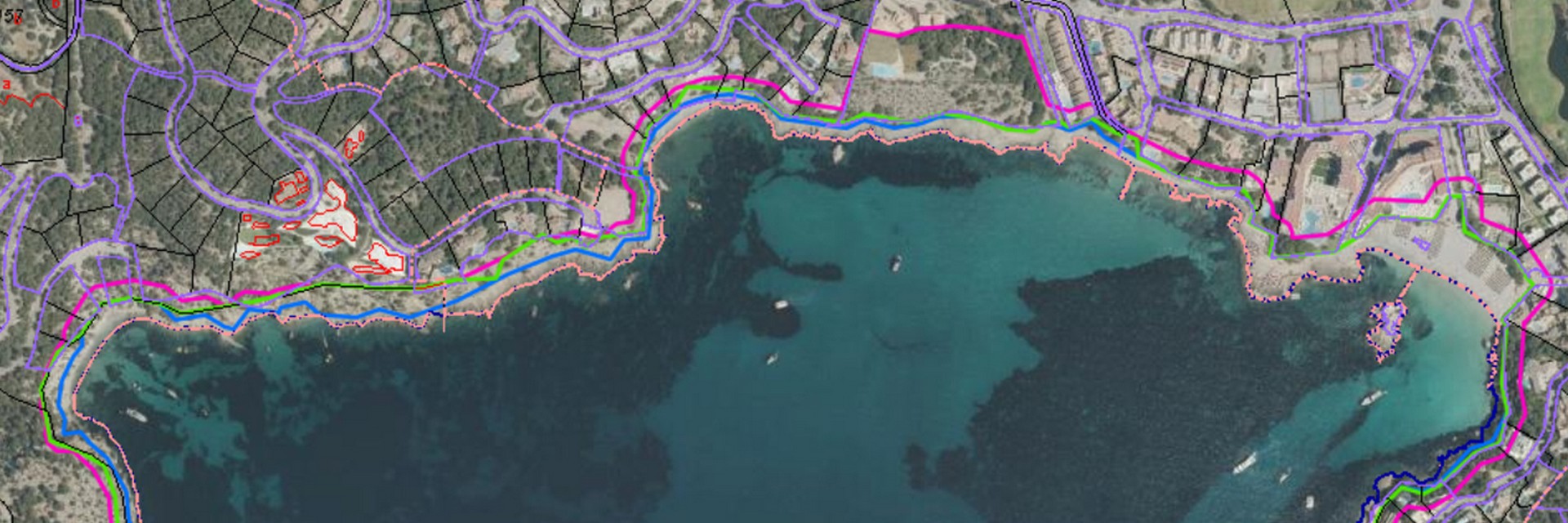Spanish coastal law, Ley de Costas
The Three Protection Zones and Their Effects in Mallorca

The Ley de Costas (Spanish Coastal Law) regulates the use and protection of the coastline throughout Spain, including Mallorca. Its objective is to preserve the coastal landscape and guarantee public access to beaches and the seashore.
For developers and property owners, this means that land close to the sea may be subject to very strict restrictions, affecting development rights, refurbishment projects, or even the permitted use of existing buildings.
- The Three Main Protection Zones
Dominio Público Marítimo-Terrestre (DPMT – Public Maritime-Terrestrial Domain)
- Declared public property, it must always remain accessible for general use.
- Private landowners lose their rights of use or may be subject to expropriation.
- Includes beaches, cliffs, dunes, and a strip of land measured inland from the maximum high-tide line.
Servidumbre de Protección (Protection Easement)
- Applies to both public and private land adjoining the DPMT.
- New residential construction is strictly prohibited.
- Refurbishment of existing legal buildings is possible but only under strict conditions: no increase in volume and no change of use.
- Gardens, swimming pools, and access routes are also subject to limitations.
- In areas already built up before 1988, the width of this strip may be reduced.
- Only very limited exceptions are permitted, e.g. infrastructure for public use.
- Covers a strip measured inland from the DPMT boundary.
Servidumbre de Tránsito (Right of Way Easement)
- Applies equally to public and private land.
- Fences, walls, or other obstacles are not allowed.
- Public access to the sea must be guaranteed at all times, even across private plots.
- A continuous strip parallel to the DPMT must be reserved for free pedestrian passage.
Note: The concept of “servidumbre” is comparable to a legal easement. These protection easements do not necessarily appear in the Land Registry (Registro de la Propiedad).
- Competent Authority and Authorisation Procedure
Authority: Dirección General de la Costa y el Mar – Demarcación de Costas de Illes Balears
- Examines each building permit application to determine whether the plot is affected by one of the protection zones.
- The architect must check beforehand whether the project falls within any of these easements.
Procedure:
- Application for an Informe de Costas (Coastal Authority Report).
- Technical review by the Demarcación de Costas.
- Resolution issued, in some cases with specific conditions.
- Practical Consequences for Developers and Owners
- New residential construction within the protection zone is excluded.
- Refurbishment of existing legal buildings is possible only under strict limitations.
- The public right of way to the sea (servidumbre de tránsito) must be maintained at all times.
- Recommendation for Prospective Buyers
Anyone considering the purchase of a frontline plot should commission a technical review before signing the contract and request an Informe de Costas.
An experienced architect can establish from the outset whether the site is affected and adapt the project accordingly. Even for works on existing buildings, it is advisable to consider the implications of the Ley de Costas from the very beginning.
Conclusion
The Ley de Costas is a decisive factor for any new construction or refurbishment project in Mallorca’s coastal areas. Its purpose is to protect the coastal landscape and public access to the sea, and it requires careful planning supported by specialised technical advice.